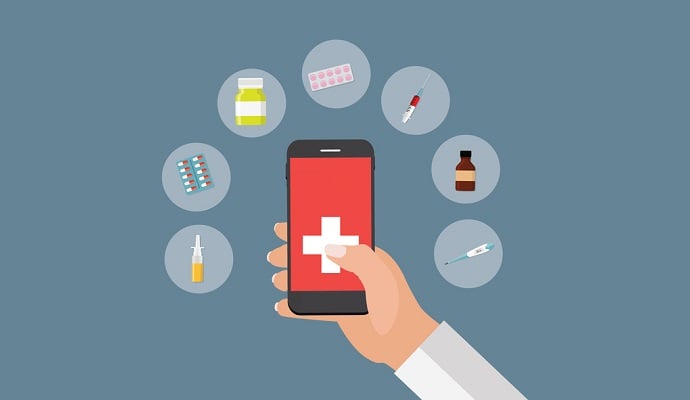Because of the convenience, telemedicine may attract new patients or serve as an incentive for current patients to seek treatment more often. Simply stated, providers who are waiting to implement telemedicine services are missing out on their chance to improve quality of care while also improving patient satisfaction.
Telemedicine and the Future of Health
Telemedicine offers a number of benefits including lower healthcare costs. It also seems to be a preferred method of medical care with about 67% of patients stating that using telemedicine somewhat or significantly increases their satisfaction with medical care.
Not yet convinced that telemedicine is for your practice? Consider the following telemedicine statistics and benefits:
-
About 53% of patients said that telemedicine somewhat or significantly increases their involvement in treatment decisions.1
-
Half of surveyed healthcare executives ranked improving the quality of care as their top reason for implementing telemedicine, and another 18% were most excited about reaching new patients.2
-
About 76% of patients care more about access to healthcare than need for human interactions with their healthcare providers.3
-
Almost 75% of all doctor, urgent care, and ER visits are either unnecessary or could be handled safely and effectively over the phone or video.4
-
The Geisinger Health Plan study found that implementation of a telemedicine program generated about 11% in cost savings during that study period. This led to an estimated return on investment of about $3.30 in cost savings for every $1 spent on program implementation.3
-
Many hospitals and physician practices do not have the staff they need to effectively provide care for the patient population. Telemedicine can help to solve provider shortages that can be a real challenge for rural health facilities to attract, afford and retain specialty providers.
-
About 74% of patients are comfortable with communicating with their doctors using technology instead of seeing them in person.5
How does telemedicine work?
Telemedicine can seem like a complicated process that often results in a number of providers not considering it for their practice. However, once you have the technology in place, telemedicine is fairly simply to implement. The following 8 steps outline a typical telemedicine workflow.
- The patient will check in at the site to attend their telemedicine visit.
- Once a year the patient must sign a consent form. Healthcare providers are required to obtain informed consent for telemedicine consultations. A Telemedicine Consent form needs to be signed by the patient/legal representative prior to a telemedicine consult.
- The patient will complete all necessary paperwork and provide a complete medical history.
- Staff at the site will prepare the exam room for the patient and collect all necessary diagnostic equipment to be used for the visit. All of the patient paperwork will be made available for the provider review before the visit begins.
- Once all documentation is received and under review by the provider, the patient will be brought to the exam room. The staff member will either remain in the exam room to assist with the equipment as necessary during the visit or wait outside the room nearby in the event that further information or technical support is needed.
- Following the visit the provider will complete the documentation, order prescriptions or tests and give treatment recommendations for the patient to follow.
- The clinician should reply to the referring provider with a note regarding the care of the patient following the telemedicine visit.
- A follow up appointment might also be scheduled at the finish of this visit.
Which conditions would be best for telemedicine?
Based on the equipment available, many conditions can be diagnosed and assessed in a telehealth visit. Medical devices and equipment allow the providers to make more comprehensive and accurate diagnoses based on the nearly complete set of information they can gather. Some tools allow the provider to remotely listen to heart rate, rhythm and lung sounds, review all vital signs as well as view images of a patient’s ears, skin and throat.
While certain visits do require a face-to-face physical assessment and cannot be diagnosed through telemedicine, some medical specialties can certainly benefit through the use of telemedicine. You could start by reviewing the list of Medicare-reimbursed telemedicine services and then consider how to encorporate telemedicine into your practice to benefit patients.
Some common visit types for a primary care physician might include:
- Colds and Flu
- Infections
- Vomiting
- Rashes
- Respiratory Infections
- Sports Injuries
- Bladder Infections
Typically, it is the patient who knows if they have something straightforward or are not sure if they need to be evaluated in person. Practices that offer telehealth services should have an understanding of what types of visits the provider feels cannot be completed though telehealth.
Are there liabilities with providing telehealth services?
A common question surrounding telemedicine services is HIPAA compliance and security. Telehealth services are an extension of your clinical care delivery and must securely manage patient information and meet all HIPAA requirements for patient privacy and confidentiality just as in-person visits should.
Keep in mind telemedicine compliance requires more than just a secure connection. According to the Telehealth Resource Centers, use of specifc telehealth equipment or technology cannot ensure that an entity is “HIPAA-compliant” because HIPAA addresses more than features or technical specifications.
Telehealth Resource Centers points out that while certain features like encryption may help a covered entity meet its compliance obligations, they do not ensure compliance, and cannot substitute for an organized, documented set of security practices.
It's important to note that popular services like Facetime and Skype do not support HIPAA compliant video conferencing. Practices should be prepared to diligently research telemedicine technology and consider the elements necessary for them to operate in a HIPAA compliant way before moving forward with telemedicine services.
Patient Education Surrounding Telemedicine
While about 74% of patients in the U.S. would use telehealth services, practices should be prepared to answer common questions and questions regarding the security of the telemedicine visits.
Helping patients understand the steps being taken to ensure patient information is secure and that your practice takes HIPAA very seriously adds another level of trust between the patient and the practice.
Some questions your patients might have that you want your staff to be prepared to answer are:
- Will my insurance cover the visit?
- How is my information being protected during a virtual visit?
- What should I do if I have technical difficulties during the visit?
- Where can I do virtual visits with my doctor?
- How do I know whether to come into the office or do a virtual visit?
- Should I be concerned about my wifi if others have access to the network?
- What equipment do I need for the virtual visit?
The Future of Telemedicine
With only about one in 10 physicians practicing in rural areas in the U.S.6 and about 20% of Americans living in rural areas without easy access to primary care or specialist medical services, telemedicine continues to prove it's value to the health care delivery system.
Telemedicine services will continue to grow in popularity with practices, physicians, and patients, especially considering the push to lower healthcare costs and improve quality of care. And with advancements in technology, it's now easier than ever to implement telemedicine at your practice.
INTEGRATED SOLUTIONS
Conquer the New Age of RCM
Learn how Revele's EMR and RCM solutions are helping
physician groups and health systems reduce costs and increase revenue.
Sources for Statistics:
1-http://www.softwareadvice.com/medical/industryview/telemedicine-report-2015/
2-http://www.foley.com/2014-telemedicine-survey-executive-summary/
4-https://www.poweredbyc2.com/details.aspx?p=BFC9674642988AE3&ppid=94350&beid=0DEC3E4079E23759
5-http://newsroom.cisco.com/press-release-content?type=webcontent&articleId=1148539
6-http://www.ruralhealthweb.org/go/left/about-rural-health/what-s-different-about-rural-health-care







